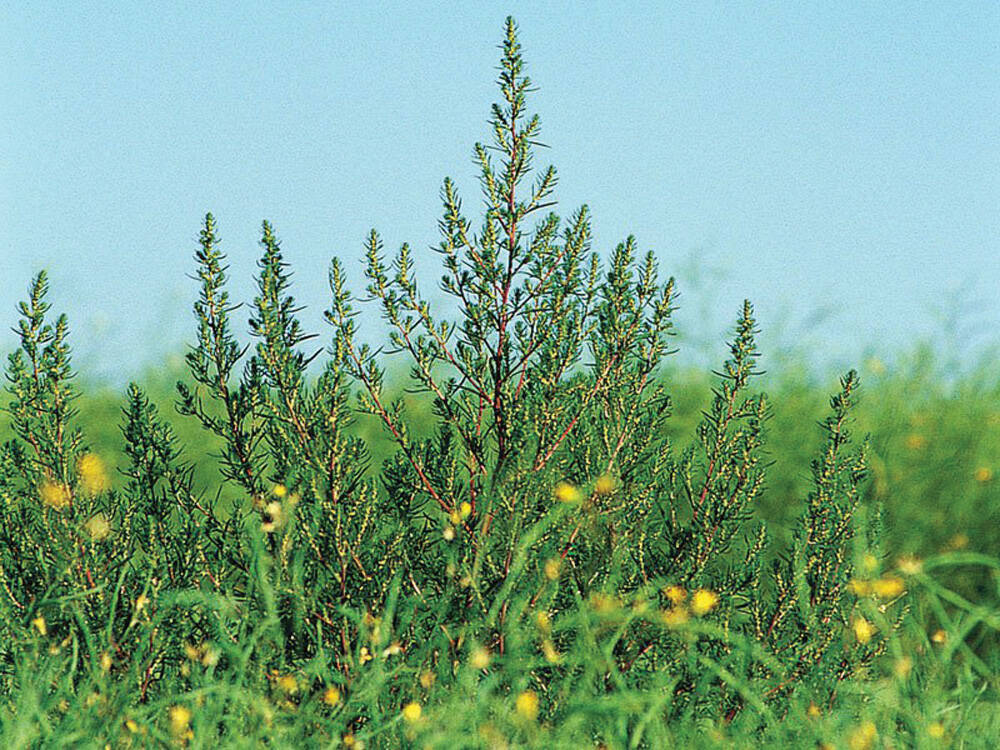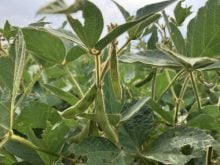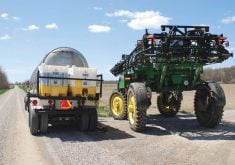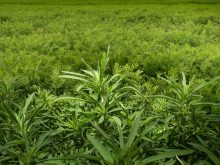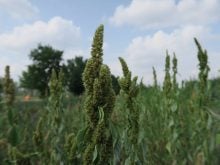Several new herbicides have been added to Manitoba Agriculture’s 2024 Guide to Field Crop Protection.
“We haven’t had a new herbicide group in over 40 years,” said Manitoba Agriculture weed specialist Kim Brown. “However, we do have some new products that are within the existing groups.”
Two of the 11 new products to the guide are meant to help combat kochia.
Read Also

House ag committee to undertake several studies
The House of Commons standing agriculture committee has set its agenda for the coming months. Members began the fall sitting with a two-hour update on international trade
“Blackhawk Evo is a burn-off product very similar to Blackhawk, but they’ve added dichloroprop (Group 4) to it now,” said Brown.
The product also includes 2,4-D and pyrofluid (Group 14) and is registered for wheat, barley, rye, triticale, field corn and canary grass.
“I put ‘new tool for kochia’ in quotation marks,” said Brown. “The dichloroprop has been shown to do well with kochia, and there is more dichloroprop in this product.”
Oxbow is another new product aiming at kochia through dichloroprop. The other active ingredient in that product is bromoxynil (Group 6).
“This looks like it’s going to be a really good broadleaf weed product,” said Brown.
The remixes
Several other additions are coformulations of products that have already appeared in the guide.
Authority Strike (Group 14, plus carfentrazone) is used for burn-off and weed control. It draws its origins from Authority Charge, but has been coformulated so that everything is in one jug. Authority Strike is registered for wheat (spring and durum), mustard, chickpeas, fava beans, field pea, flax, sunflowers and soybeans.
Intruvix II — a burnoff plus residual weed control product — is also a coformulation of a previous product name.
“Intruvix II is basically the same as Intruvix, which is tribenuron (Group 2), plus dicamba (Group 4), plus carfentazone (Group 14),” said Brown.
Advantage Glufosinate Plus, for use on LibertyLink canola, contains mainly glufosinate (Group 10), with quinclorac (Group 4) added. The quinclorac is aimed at better control of weeds like cleavers, volunteer flax, barnyard grass and green foxtail.
Other additions
Batalium is another new product, but one that comes with an asterisk. The product was first released several years ago, but was removed from the guide after issues emerged with some fomulations. It has now returned to the publication. The new formulation includes flucarbazone (Group 2), fluroxypyr (Group 4), MCPA (Group 4) and briomoxyl (Group 6).
“There is a lot going on here,” said Brown. “This will be a really good product if you’re battling any Group 1-resistant grass weeds. And if you want that flushing weed control coming from that flucarbazone, this is a good product to try.”
Callisto, meanwhile, is a new name for corn growers in Western Canada, but is well known in other corn-growing regions. The active ingredient is mesotrione (Group 27) and is registered for field corn from the two- to six-leaf stage.
Local registration dictates that it may only be used for post-emergent weeds at half the rate seen in other areas.
“Elsewhere, Callisto is registered at a much higher rate, and it must be put on with Atrazine (Aatrex 480) and Agral 90,” said Brown. “It’s really only registered technically for (control of) volunteer canola, but adding in Atrazine is going to bring some control for lamb’s quarters, some pigweed and grass control as well.”
OnDeck is a new product from Corteva. Its niche is similar to the one already dug by Infinity, Brown said. The active ingredients are bromoxynil (Group 6) and tolpyralate (Group 27). It’s registered for use on wheat and barley.
Restore NXT also joins the new lineup from Corteva. The active ingredients are two Group 4 chemistries: aminopyralid and florpyrauxifen. It is registered for use in spring and early summer on permanent grass, pasture and rangeland.

“This looks like a nice new product for grass pastures and rangelands,” said Brown.
Select Plus is a new product coming from UPL. It is based on their Select product, which has a main ingredient of clethodim (Group 1). The “plus” in the name refers to the new addition of quizalofop (also Group 1) to the jug.
“Quizalofop is basically the old Assure,” said Brown. “Select Plus is a full rate of Select, plus a half rate of Assure.”
The product is registered on alfalfa for seed production, canola, chickpea, dry beans, fava beans, field peas, lentils, flax lentils, mustards (brown, oriental and yellow) and soybeans.
“It’s going to help pick up some of the harder-to-kill weeds, like your wild oats,” said Brown. “As long as you don’t have Group 1 resistance, this is still going to be a really good product.”
Varro FX from Bayer is the final new addition to the crop protection guide.
“This is thiencarbazone (Group 2), which is basically Varro plus fluroxypyr (Group 4),” said Brown.
It is registered on spring and winter wheat and offers the only Group 2 herbicide that is an emulsifiable concentrate, Brown noted.
“Everything else is a solution; they’re harder to rinse out and a little bit slower to mix,” she said, adding that VarroFX is comparatively easy to mix and partners well with a number of other products in the tank.




